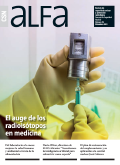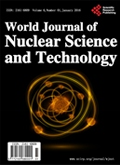|
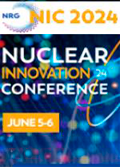
|
 |
|
 |
 |
|
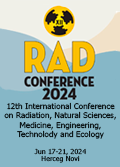
|
 |
|
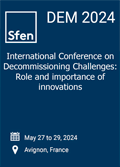
|
 |
|

|
 |
| |
 |
| |
| |
|
|
|
|
Si no desea recibir mas este Boletín haga click aqui. |
|
|
|
|
|
|
|
|
|
|
|
|
|
|
|
 |
 |
 |
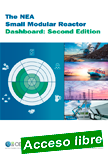 |
The NEA Small Modular Reactor Dashboard: Second Edition
OCDE. Nuclear Energy Agency ¦ NEA No. 7671¦ 188 pages ¦ Date published: 2024
Small modular reactors (SMRs) are technologies capable of harnessing the energy from nuclear fission reactions to produce heat and electricity with power outputs typically smaller than 300 MWe, with some as small as 1-10 MWe. SMRs are designed for modular manufacturing, factory production, portability and scalability. They also come in a variety of configurations and temperature ranges to create heat that can be used directly, or to generate electricity to decarbonise hard-to-abate sectors.
|
The combination of these innovations presents additional potential benefits in terms of safety, operational and deployment flexibility, economics, as well as potentially spent fuel and waste management. The second edition of the NEA SMR Dashboard provides a comprehensive assessment of the progress made by SMR designers and companies worldwide. Looking beyond technical feasibility, the NEA SMR Dashboard assesses progress towards first-of-a-kind commercial deployment across six dimensions: licensing, siting, financing, supply chain, engagement and fuel. The NEA SMR Dashboard reveals substantial progress towards SMR deployment and commercialisation in NEA and non-NEA member countries, with a subset of designs in more advanced stages of commercialisation and deployment. For this second edition of the NEA SMR Dashboard the NEA’s comprehensive global review identified 98 SMR technologies around the world. Fifty-six SMRs are included in this edition of the NEA SMR Dashboard. The other 42 include approximately 7 that are under development and requested not to be included in the SMR Dashboard at this time but may be included in the future; the remainder include SMR technologies that are not under active development, may be without human or financial resources, or have been cancelled or paused indefinitely. The assessments in this edition of the SMR Dashboard are based on progress up to a cutoff date of 10 November 2023.
|
 |
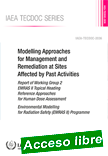 |
Modelling Approaches for Management and Remediation at Sites Affected by Past Activities
Report of Working Group 2 EMRAS II Topical Heading Reference Approaches for Human Dose Assessment, Environmental Modelling for RAdiation Safety (EMRAS II) Programme
IAEA-TECDOC-2036 ¦ English ¦ Date published: 2024
A range of diverse sites globally have been affected by past activities and events resulting in their contamination with residual radioactive material. As a result, there is a need to evaluate the site-specific radiological hazards and doses to people and the environment to determine whether remediation is justified and, if so, to develop and implement plans to address the situation.
|
The IAEA has published a Generic Safety Guide (GSG-15) - Remediation Strategy and Process for Areas Affected by Past Activities or Events, which establishes a stepwise approach for the planning and implementation of remediation applying the principles of radiation protection. This publication presents the results generated from the modelling of case studies of sites contaminated with residual radioactive material from past activities and events within the Environmental Modelling for Radiation Safety (EMRAS II) programme to demonstrate the practical application of the stepwise remediation process presented in GSG-15.
|
 |
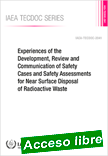 |
Experiences of the Development, Review and Communication of Safety Cases and Safety Assessments for Near Surface Disposal of Radioactive Waste
IAEA-TECDOC-2041 ¦ English ¦ Date published: 2024
The IAEA has organized various international meetings and projects on the safety of near surface disposal of radioactive waste. These projects included work to (i) benchmark safety assessment models, (ii) develop improved safety assessment methods, (iii) apply improved safety assessment methods to proposed and existing disposal facilities and consider regulatory review of safety assessments, (iv) to enhance understanding of the safety case for near surface disposal facilities, and (v) to explore approaches for the practical use of the safety case in the management of near surface disposal facilities.
|
These activities have provided a valuable and productive international forum for discussions, exchange of experiences, development of methodologies and mutual learning. Since 2017, the IAEA has been facilitating the ongoing Forum on the Safety of Near Surface Disposal. This publication results from the work of the Forum during October 2017 to September 2022. The intended audience for this publication includes those involved in developing, operating and regulating near surface disposal facilities for radioactive waste and those involved in developing, reviewing, and using safety assessments and safety cases for the disposal of radioactive wastes.
|
 |
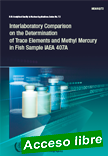 |
Interlaboratory Comparison on the Determination of Trace Elements and Methyl Mercury in Fish Sample IAEA 407A
IAEA Analytical Quality in Nuclear Applications Series No. 72 ¦ English ¦ 70 pages ¦ Date published: 2024
This publication summarizes the results of the interlaboratory comparisons on the determination of trace elements and methylmercury in a fish sample organized in 2021. This exercise was designed to evaluate the measurement performance and analytical capabilities of participating laboratories with respect to the determination of trace elements and methyl mercury in fish sample IAEA-407A.
|
The objectives of this ILC was to evaluate the competence of selected laboratories regularly involved in the characterization of certified reference materials (CRMs) produced by the IAEA.
|
 |
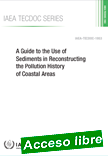 |
A Guide to the Use of Sediments in Reconstructing the Pollution History of Coastal Areas
IAEA-TECDOC-1953 ¦ English ¦ Date published: 2024
This guide is a product of project RLA/7/012. It was developed by and for scientists in the region as a guide to the use of sediments to assess current and historical levels of pollution in coastal areas (over roughly the last hundred years) by studying sediment cores dated using the radionuclides 210Pb and 137Cs. There is a special focus on sampling methods that provide a basis for dating, including an analysis of geochemical and sedimentological parameters, which help to improve the understanding of variation in rates of sediment accumulation and pollutant concentrations at study sites.
|
Care was taken to ensure the quality of the analytical data on concentrations of pollutants, and the guide sets out the most common methods of normalizing these to assess pollution levels. This guide complements the book Radiocronología de sedimentos costeros utilizando 210Pb: modelos, validación y aplicaciones [Coastal sediment radiochronology using 210Pb: models, validation and applications] published by the IAEA in 2012, which was also a product of project RLA/7/012.
|
 |
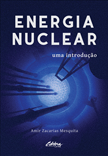 |
Mesquita, Amir Zacarias. Energia Nuclear: uma introdução.
Curitiba, Editora UFPR, 2024. 249 p.
A Energia Nuclear é responsável por 10% da eletricidade produzida no mundo e por mais de 1/3 de toda a energia com baixa emissão de carbono. Mesmo assim, ainda é relativamente desconhecida do grande público. Nesse contexto, este livro do prof. Amir Zacarias Mesquita vem preencher uma importante lacuna, ao apresentar os fundamentos da geração de energia por meio de reatores nucleares. Além de abordar conceitos teóricos fundamentais, o livro inclui os aspectos tecnológicos das usinas nucleares, apresentando os principais projetos em operação no mundo e os caminhos que estão se descortinando para a futura geração de reatores nucleares.
|
É uma fascinante viagem desde a primeira reação nuclear sustentada, em 1942, até o que há de mais atual na busca do domínio da fusão nuclear. Trata-se de uma obra oportuna e atual, que muito contribuirá para divulgar e desmistificar essa tecnologia fundamental para a viabilização da tão almejada economia global de baixo carbono.
|
 |
 |
Quality and Reliability Aspects in Nuclear Power Reactor Fuel Engineering - Guidance and Best Practices to Improve Nuclear Fuel Reliability and Performance in Water Cooled Reactors
IAEA Nuclear Energy Series No. NF-G-2.1 (Rev. 1) ¦ English ¦ STI/PUB/2072 ¦ 184 pages ¦ Date published: 2024
Improved fuel reliability means reduced fuel failures in reactor operation. Fuel failures, with their consequent adverse impact on the environment and requirements for additional waste management, result in costs for remediation, 'failed core' operation and maintenance.
|
Therefore, poor performance of fuel can lead to uncompetitive operational conditions for a nuclear power plant. A revision of the earlier edition, this publication has been significantly extended to support nuclear fuel designers, manufacturers, reactor operators, and fuel engineers and managers on fuel design and design changes, fuel manufacturing, qualification, in-reactor operation, and on-site services to achieve excellence in fuel reliability and performance and safe operation of nuclear fuel under all applicable plant states.
|
 |
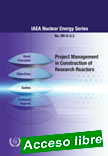 |
Project Management in Construction of Research Reactors
IAEA Nuclear Energy Series No. NR-G-5.3 ¦ English ¦ STI/PUB/2068 ¦ 73 pages ¦ Date published: 2024
Providing a comprehensive overview of project management for the construction of research reactors, this publication gives guidance to Member States on the best practices that will assist in the realization of that phase of a research reactor deployment project. Member States planning to embark on a research reactor programme together with a nuclear power programme may also refer to this publication to ensure that the approach and methodology for the implementation of both is harmonized,
|
efficient and effective.
|
 |
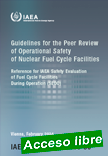 |
Guidelines for the Peer Review of Operational Safety of Nuclear Fuel Cycle Facilities: Reference for IAEA Safety Evaluation of Fuel Cycle Facilities During Operation (SEDO)
IAEA Services Series No. 50 ¦ English ¦ IAEA-SVS-50 ¦ 62 pages ¦ Date published: 2024
The purpose of this publication is to provide information on the preparation, scoping, implementation, reporting and follow-up of SEDO review missions. It is mainly intended for members of the SEDO mission team but may also help the operating organization of a nuclear fuel cycle facility in preparing to host a SEDO mission.
|
.
|
 |
| |
|
|
 |
| |
|
|

|
|
|
| |
|
|
| |
| |
|
|
| |
| |
|
|
| |
| |
|
|
|
| |
| |
|
|
|
|

